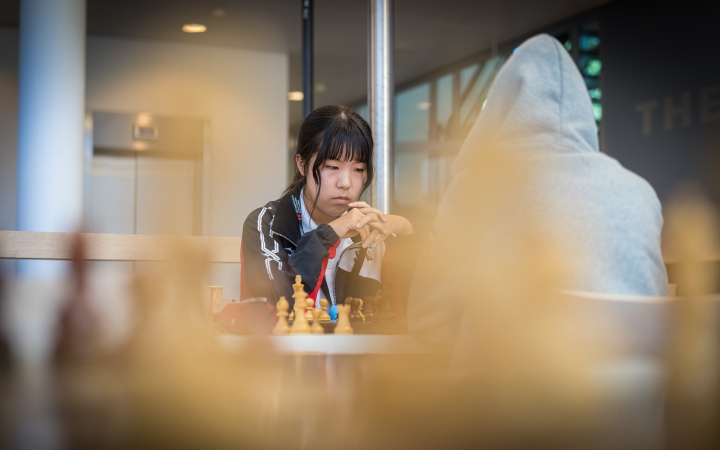
After three rounds at the FIDE World Youth Olympiad 2023, China and Netherlands 1 jointly lead with 3/3.
On the second day of the Olympiad, two rounds were played.
Round 2 was held in the morning, right on the schedule. Just outside the “top boards,” there were many draws. The high seed teams 6 (Uzbekistan), 7 (Azerbaijan), 8 (France), and 9 (Israel) drew against lower-rated teams Bulgaria, Kazakhstan 2, Greece, and Italy, respectively. The top team, Turkey, whitewashed the 3rd team of the Netherlands, and their opponent from Round 1, Georgia, showed that their 2-2 draw was not a one-time success. They convincingly beat Slovakia by 3-1.
Now back to the top boards. Kazakhstan 1 defeated India 3-1. It wasn’t easy, as only the black boards of Kazakhstan managed to win in the endgame. FM Sepenov relentlessly held onto a slight advantage in an endgame with heavy pieces, and eventually, the exposed white king (CM Adireddy) turned out to be a significant problem. WIM Nurmanova scored her second point for the team Kazakhstan.
China continued its dominance by winning again with a score of 3.5-0.5, this time against Switzerland. Except for the draw between WFM Manko (Switzerland) and Kong Xiangrui, the Chinese players demonstrated sharper play than their Swiss opponents.
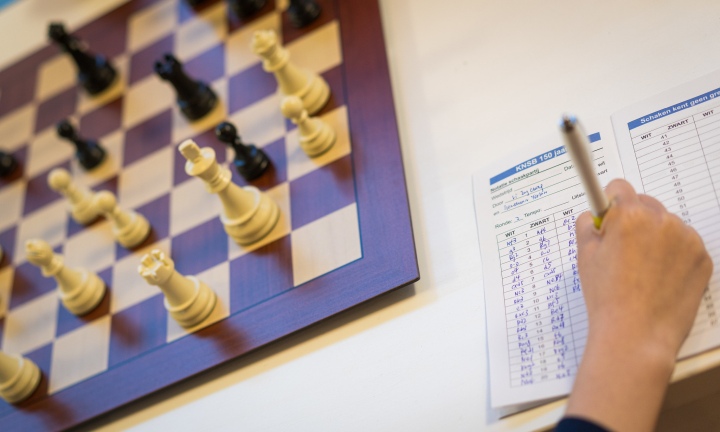
The Dutch first team scored a narrow 2.5-1.5 win against Latvia, but it could have been different. On the first board, Arsenijs Savicevs played an excellent game against FM Yichen Han. The position emerging of Caro-Kann, Advance Variation, had strong similarities with the French Advance. In this line, black should be cautious of the move dxc5 followed by b4. Han underestimated this idea and ended up in a worse position by move 7. Move 13.c4 exposed Black’s weakness: White was developed and ready for action, while Black’s king was stuck in the center. Black seemed to solve some of his problems but with 22.Nf6 Savicevs showed that it was indeed White playing for a win. He preserved his advantage deep into the endgame but winning was still not straightforward. With 39…Rd7??, black blundered and allowed a beautiful skewer! White found the tactics and won the game.
See the exciting battle on lichess
On board 2, Arthur de Winter defeated Aleksejs Adamovics by handling the middlegame and endgame in the Maroczy structure better than his opponent. On board 3, Mikelis Vingris and Prajit Kumar didn’t upset the balance, resulting in a 1.5-1.5 draw. It all came down to the game on board 4 between the ladies Ter-Avetisjana and Verheij. Ter-Avetisjana pressed for a win but miscalculated a pawn sacrifice, giving Verheij a significant advantage that she duly converted into a full point, securing the win for the Netherlands.
Hungary, seeded 5th, also won their second match. They defeated the 2nd team of the Netherlands by a score of 3.5-0.5, although it wasn’t as smooth as it might seem. Boards 1 (Kobe Smeets) and 2 (Roger Labruyere) played excellent games for the Dutch team. Nevertheless, WIM Gaal (board 1) and FM Palczert (board 2) from Hungary proved stronger in the endgame.
The 4th team of the Netherlands narrowly lost to Cyprus (2.5-1.5). Boyd Leenen was inspired after his game yesterday (a beautiful attacking game against his Chinese opponent). This time, Leenen initiated the attack and broke through his opponent’s position with a rook lift along the h-file.
In Round 3, which was held in the afternoon, the two top teams faced each other. Top-seeded Kazakhstan 1 played against 5th-seed Hungary. It was an intense battle between these two strong squads, resulting in a 2-2 tie. On the first board, WIM Zsoka Gaal had significant chances to defeat IM Ansat, who had previously made two draws. Unfortunately for Zsoka, her advantage evaporated in a complex endgame. On board 2, Kazakhstan secured a full point, as FM Sapenov (Kazakhstan) ultimately capitalized on an earlier missed opportunity. FM Kolimar played an instructive game against FM Mamedov and scored the victory for Hungary. On move 25, Mamedov allowed the white rook on c7, which then extended white’s control over the 7th rank with a second rook. The final position doesn’t feature two white rooks on the 7th rank, but two pawns! A beautiful win, see below. On the 4th board, there was a fierce battle with chances for advantage for both sides, but FM Giang and WIM Nurmanova ultimately agreed to a draw.
As a result, Kazakhstan dropped the lead as China and Netherlands 1 scored three match victories. The Chinese squad has been performing exceptionally well. In Round 3 trounced Romania 4-0! China has not suffered any losses yet and has the most board points of all teams, making just two draws. The team has been playing very consistently; none of the players has had a difficult position in three rounds. The only exception happened on board 3 in this match, where Xiangrui Kong was building a brilliant attack. Everything was going well for him until moves 33 and 34, where he slipped up. His opponent, FM Cnejev, missed the opportunity, and on move 36, Kong executed a decisive combination to win material.
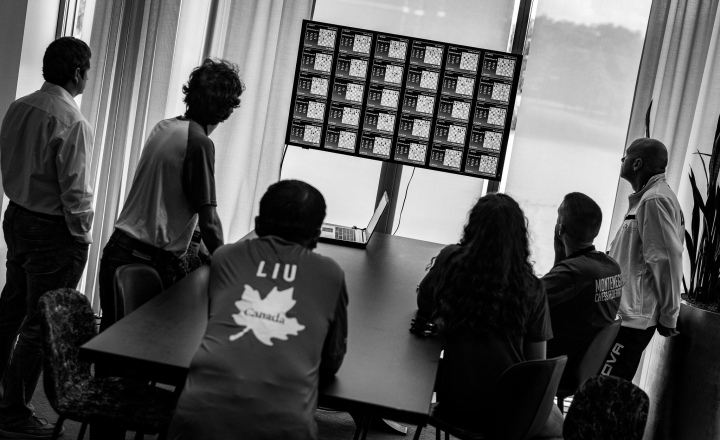
Netherlands 1 is the only team joining China with 3 wins. They once again triumphed over Canada 1 by a score of 2.5-1.5. On board 1, FM Yichen Han is still to find his footing in the tournament. This time, Han had a winning position for most of his game, but under severe pressure, he turned it into a theoretical rook and bishop versus rook (without pawns) draw. He tried to push for more, but FM Atanasov didn’t yield. On board 2, another FM Johnathan Han from the Canadian team, faced FM Arthur de Winter. Han stood well in the Najdorf Sicilian, building up his advantage, although the position remained complex. After a misstep by his opponent, FM de Winter patiently seized control and secured a point for the Netherlands.
CM Max Chen of Canada might regret not capitalizing in his game. Facing Prajit Kumar, he achieved a favourable position and got an excellent opportunity to win a piece (or more). However, it wasn’t straightforward. He later lost his advantage, and it was Kumar who played for the win. In a time scramble, the opponents settled for a draw. On the 4th board, Dana Verheij found a nice tactic that won her a piece. The white queen was awkwardly positioned as a defender in the center of the board. After winning the piece, Verheij converted her advantage, earning the Netherlands 2.5 points.
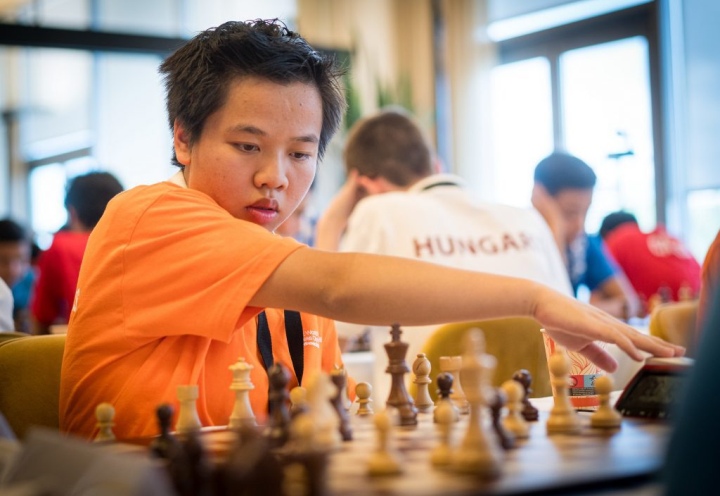
One of the most exciting games of the round was played between Greece and Israel on the first board. Greek FM Makridis possibly delivered the attacking masterpiece of the day against IM Milikow. From a Najdorf with …h5, black quickly neutralized all the danger in the position. After exchanging the dark-squared bishops, Black started his own active play. With the rook on h8 and the white king on h1, themes along the h-file emerge rapidly. The black knights freely jumped between the 5th and 3rd ranks, begging to be captured. When White had no choice but to capture, checkmate followed swiftly. Delightful!
Now for the host teams. The 2nd team played a draw against Morocco after all white players secured victories. Kobe Smeets crowned a beautiful attack with checkmate, while Rhys Arnold earned the other point for the Netherlands. Unfortunately, Roger Labruyere encountered troubles early in the game, while Isafara Gerin was in a position of potential victory and draw for a long time. The 3rd team succumbed to Australia 2, while the 4th team secured their first victory against Chinese Taipei 1.
Text: Bram Klapwijk
Photos: Lennart Ootes
Official website: youtholympiad2023.fide.com/



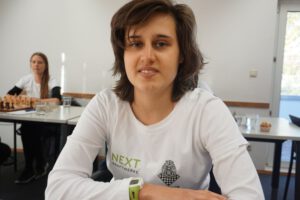


More Stories
Chess in New York: A walk through parks, clubs and history
FIDE World Rapid and Blitz in New York preview: An epic ending to 2024
„Schach als Brücke für Frieden und Hoffnung“
Season’s greetings from FIDE President
Full list of participants for 2024 WRB announced
Gukesh D crowned 18th FIDE World Champion